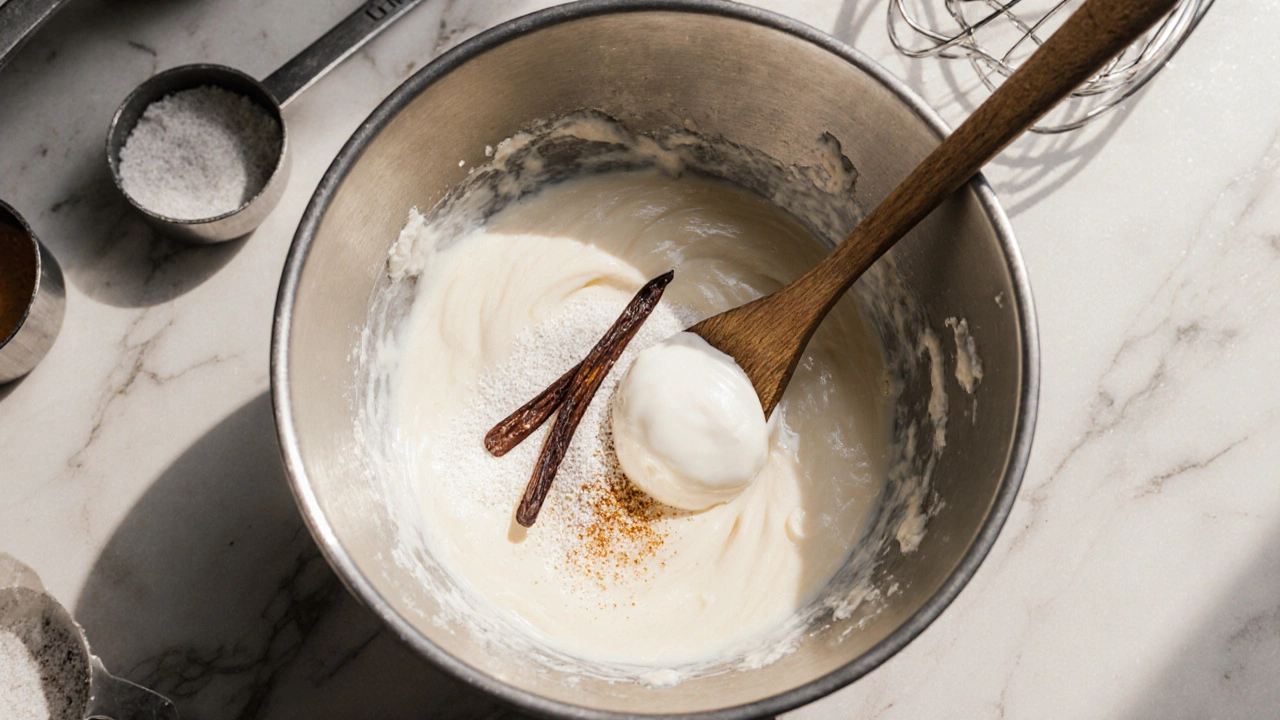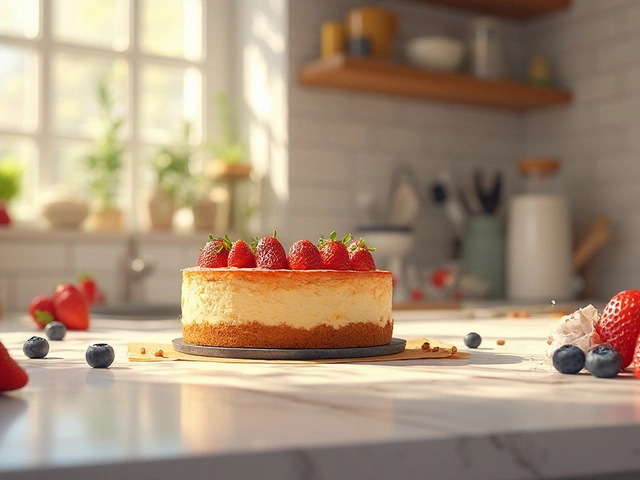Sour Cream Benefits: Why This Tangy Dairy Staple Is a Kitchen Hero
When working with sour cream, a fermented dairy product that’s smooth and tangy. Also called cultured cream, it adds moisture, richness, and a hint of acidity to dishes, you instantly get a versatile ingredient. Dairy, the food group that supplies calcium, protein, and natural fats works hand‑in‑hand with sour cream in both sweet and savory recipes. The probiotic, friendly bacteria formed during fermentation boost gut health, while baking, the practice of creating cakes, cookies, and other treats relies on sour cream to keep crumb tender and flavor balanced.
Moisture and Texture: The Baking Boost
One of the biggest sour cream benefits is its ability to lock in moisture. When you stir sour cream into a cake batter, the fat droplets coat flour particles, slowing gluten formation and preventing a dry, tough crumb. That’s why many professional bakers reach for sour cream in pound cakes, cheesecakes, and even cupcakes. A splash of sour cream can turn a dense batter into a light, velvety texture without adding extra oil. The slight acidity also reacts with baking soda, creating tiny bubbles that lift the cake and give it a uniform rise.
Health‑wise, sour cream packs a decent dose of calcium and vitamin A. A half‑cup serving delivers roughly 10 % of the daily calcium requirement, supporting bone strength. Vitamin A, essential for eye health, comes from the milk fat that remains after fermentation. Pairing sour cream with whole‑grain flours can boost the overall nutrient profile of a muffin or scone, making indulgent treats a bit more nourishing.
If you’re watching calories, sour cream can be a smart butter substitute. Because it contains water and protein in addition to fat, you can use about half the amount of butter and still keep the richness. Swapping butter for low‑fat sour cream in a chocolate frosting reduces saturated fat while preserving a silky mouthfeel. The result is a lighter dessert that still satisfies a sweet tooth.
Flavor is another area where sour cream shines. Its mild tang cuts through overly sweet or rich components, balancing desserts like fudge or brownies. For instance, adding a dollop of sour cream to a warm brownie batter yields a fudgy interior with a subtle pleasant zing—something readers of our Fudge Temperature Guide often appreciate. In bean‑rich brownies, the acidity also helps keep the crumb soft, preventing the dreaded dry edge.
Beyond sweets, sour cream is a star in savory sauces and tacos. A quick mix of sour cream, lime juice, and chopped cilantro creates a creamy salsa that mellows the heat of jalapeños while adding a cooling texture. This versatile dip pairs perfectly with baked tortilla chips or as a topping for roasted veggies, demonstrating how the same ingredient can bridge dessert and dinner tables.
For those with lactose concerns, many commercial sour creams are made from cultured milk that reduces lactose levels by up to 80 %. The fermentation process breaks down much of the sugar, making it easier on sensitive stomachs. If you’re truly lactose intolerant, look for “lactose‑free” labeled versions or try a homemade blend of cultured kefir and cream.
Storing sour cream is straightforward: keep it sealed in the fridge and use it within two weeks of opening for optimal flavor and texture. If you notice a thin watery layer on top, simply stir it back in; the product is still good. For longer storage, you can freeze sour cream in portion‑size bags, though the texture may change—stirring it into cooked dishes after thawing works well.
All these points show why sour cream is more than just a topping. Its combination of moisture, mild acidity, nutrients, and probiotic power makes it a practical choice for anyone looking to improve baked goods, cut calories, or add a gentle tang to savory plates. Below you’ll find a curated list of articles that dive deeper into specific recipes, techniques, and ingredient swaps—each one showing a different facet of sour cream’s many advantages.

Why Add Sour Cream to Cheesecake? Benefits, Tips, and Substitutes
Explore why sour cream is added to cheesecake, how it improves texture and flavor, the right amounts, substitutes, tips, and FAQs for perfect results.
View More




